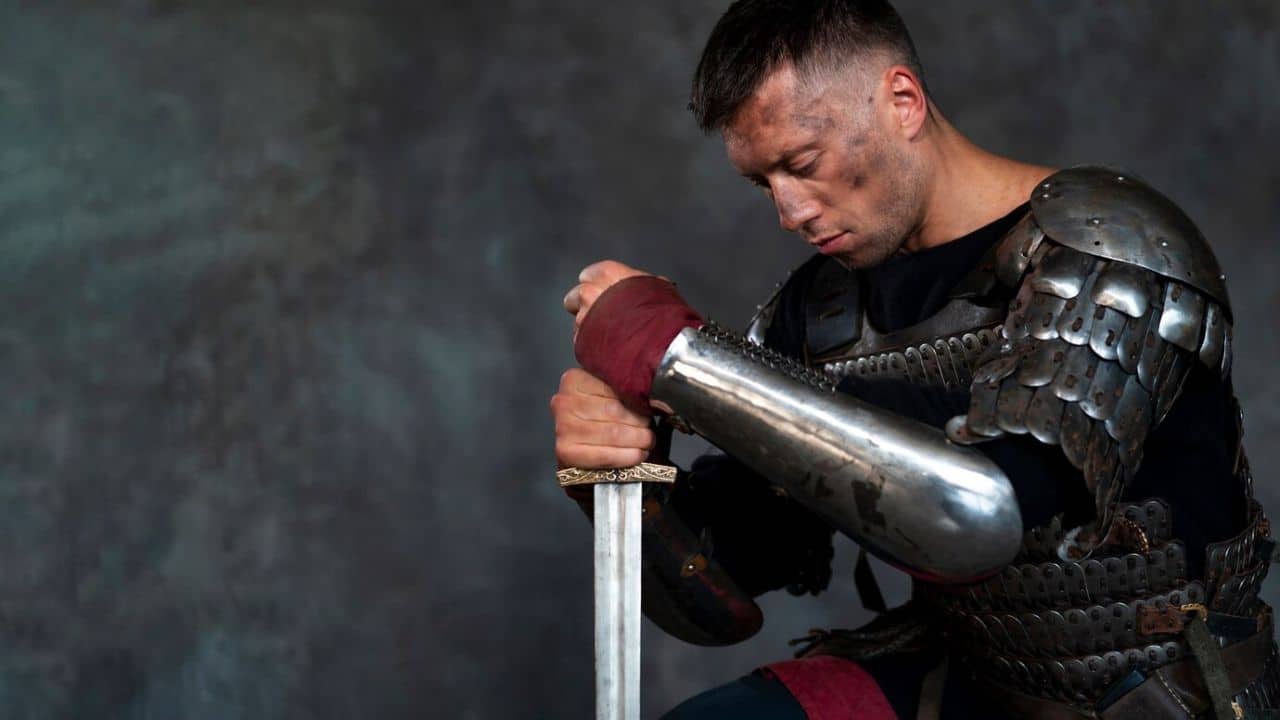Modern sports that are based on medieval combat have gained popularity in recent years, with buhurt appearing as one of the most technically demanding disciplines. This full-contact sport requires certain protective equipment that features historical authenticity and meets safety standards. This buhurt armour is designed with medieval-themed craftsmanship and modern engineering to protect knights in dynamic sparring matches. In this way, enthusiasts could maintain an atmosphere of martial arts and required safety.
What is Buhurt and Why Armour Matters?
Overall, buhurt is a contemporary full-contact fighting sport that takes hold of knights’ techniques. As opposed to traditional reenactments, buhurt entails energetic sparring with forged weapons; it makes armor important for safeguarded participation. These matches can occur in various settings, from duels to large-scale team ones, with participants employing weapons, including two-handed swords, axes, polearms, and maces.
Tough armor is critical in buhurt and can’t be dramatized. Although the intended regulations require armor to meet strict safety standards, preserving historical accuracy—this is normally based on mid-century constructions. Every armor piece must be capable of withstanding direct hits from blunt buhurt weapons. They’ll protect your body against cutting and crushing blows, enabling athletes to move with easement and save stamina in the course of intensive matches.
Choosing the Right Buhurt Armour for Competition
Materials used in their designs are substitutes for medieval ones to improve safety features. The foundation of any setup is the helmet, which must provide complete head coverage and suggest adequate visibility and ventilation. Helmets that you can encounter on buhurt participants often feature strengthened spots in high-impact fields and padding systems; it also upholds silhouettes of tournament partakers in middle centuries.
The protection of body centrilized on the cuirass—torso armor—this part is constructed from steel at least 1 mm thick. Modern designs frequently comprise overlapping plates and strategic articulation points for enhanced mobility. While leg protection includes cuisses, greaves, and sabatons, the arms are protected with vambraces and rerebraces. All armor pieces have work together seamlessly to prevent gaps in coverage.
Buhurt armour also can be modified. Namely, modern padding materials, such as high-density foam and impact-absorbing polymers—they’re commonly employed beneath steel plates. Fastening systems assist knights in distributing weight more effectively and reducing weariness. Moreover, some buhurt armour can implement adjustable strapping systems and ergonomic pieces.
Maintenance and Upkeep of Buhurt Armour
Appropriate maintenance of buhurt armour is a key for both the longevity of the equipment and constant quality of safety. Modern armor pieces depend on regular cleaning with specialized anti-rust solutions, particularly after wearisome training sessions or competitions where sweat and moisture can accumulate. The steel components need frequent inspection for structural integrity, especially in fields that receive repeated impacts.
Even famous knights in buhurt sport frequently employ required maintenance practices. It entails the application of current rust inhibitors, synthetic padding materials that also resist moisture. The majority tournament participants maintain relations with credible armor manufacturers who can perform repairs relying on both traditional and contemporary welding and metalworking approaches.
The padding and arming garments worn under the armor have been changed dramatically. Moisture-wicking materials can be incorporated with classical materials, such as wool and linen in order to ensure optimal comfort and protection. These undergarments need regular washing and maintenance actions to prevent odor and preserve their safeguarding properties.
Rising to the Challenge: Preparing for Buhurt Competitions
Preparing for buhurt competitions involves a comprehensive approach to armor pieces and physical conditioning. Every aspiring knight has the duty to develop certain strength and endurance to perform appropriately when wearing up to 35kg of steel. Training programs typically foster riddled martial arts directly from the middle age, those techniques with contemporary fitness methods.
Competitors must learn to move efficiently in their armor, developing specialized techniques for breathing, and attempting to strike their opponents. The majority of reputable buhurt fighters utilize modern training inventory and methods, such as weight training, cardiovascular conditioning, and mobility work. They ebrace these prectices to prepare their bodies for the authentic demands and requirements of weapon wielding sparring matches.
Equipment preparation is equally important since before competitions, knights have to make sure that their armor meets all current safety regulations, but they must also preserve historical authenticity. This often entails working with certified armorers who implement both historically accurate designing methods and modern technologies. The majority of opponents own multiple sets of armor pieces that allow them to customize their setups based on specific tournament mandatory points or fighting techniques.
As the sport of buhurt continues to develop, with armor designs and safety standards regularly being refined and improved. Worldwide and localized tournaments feature innovative armor solutions that can push the boundaries of traditional designs. The development of buhurt armour reflects an intriguing involvement of medieval craftsmanship and modern manufacturing. This way, it can ensure that participants will engage in full-contact sparring matches lightly and way much effortlessly.



































